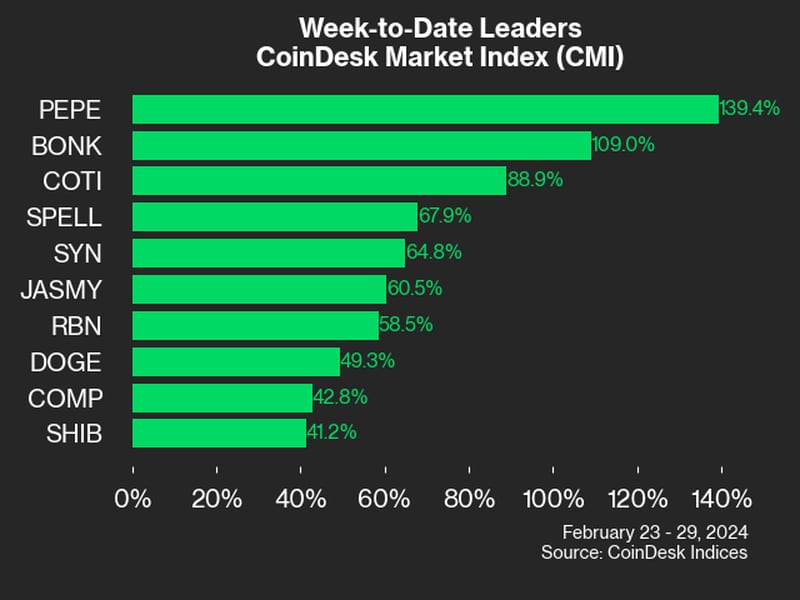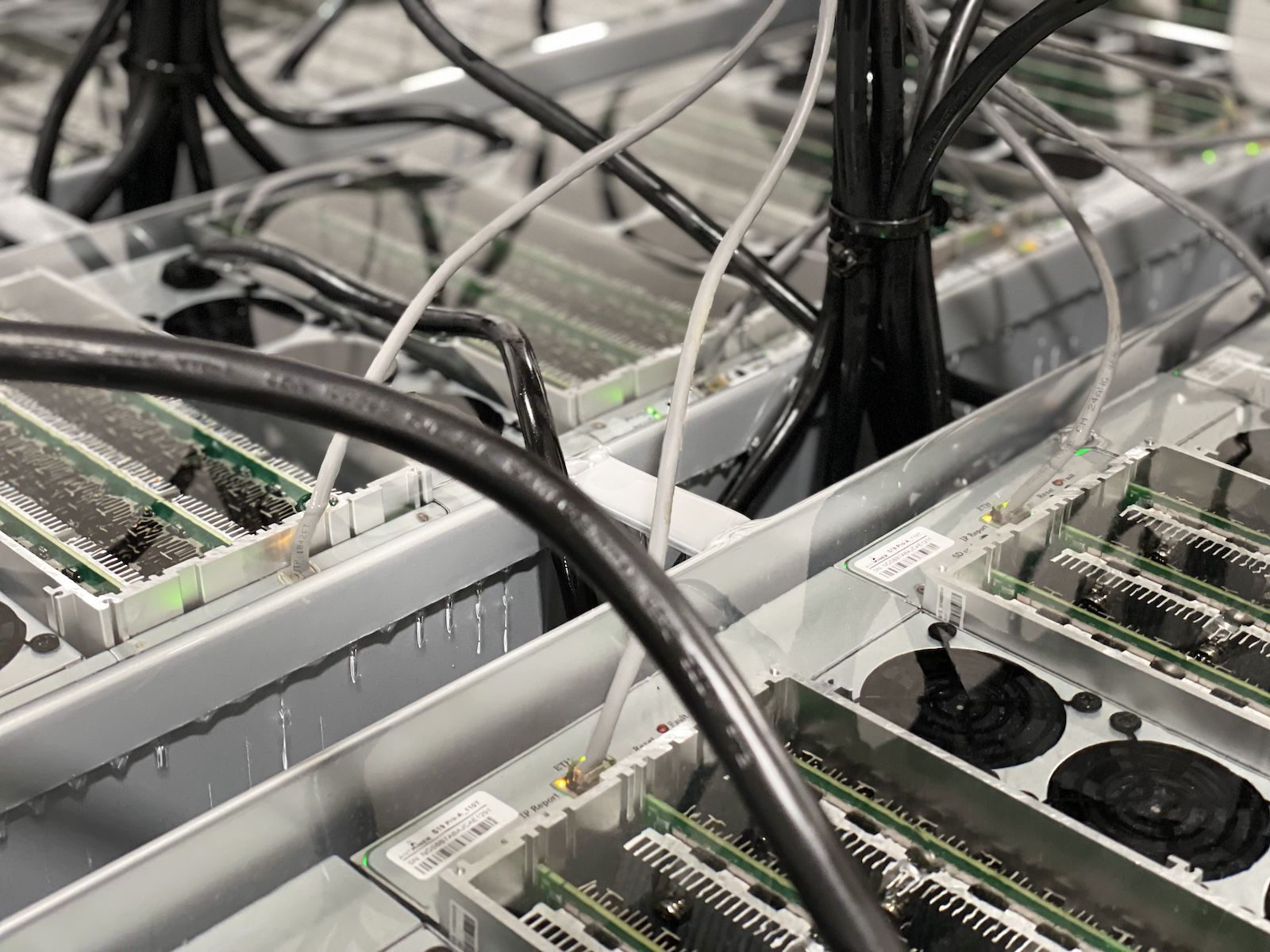Crypto’s Quirky Automated Market Makers and How They Differ From TradFi Exchanges
The conceptual simplicity of cryptocurrencies drives much of the excitement and adoption of the asset class. Cryptocurrencies are, by and large:
-
digital units of account …
-
that store value …
-
and that can be exchanged for other items of value.
Readers who can still recall their early principles of economics classes probably recognize that those three tenets are part of the definition of money itself.
You’re reading Crypto Long & Short, our weekly newsletter featuring insights, news and analysis for the professional investor. Sign up here to get it in your inbox every Wednesday.
Still, conceptual simplicity gives way rapidly to practical complexity when users look closer at crypto. That’s especially apparent with its use as a medium of exchange, point #3 above. And also often when it comes to transferring crypto from one party to another.
In crypto, unlike conventional finance, there are two very different kinds of exchanges. And helping you grasp them – just like any thorny topic in crypto – is a challenge I relish taking on.
There are two primary ways to transfer on crypto exchanges:
-
Order books
-
Automated market makers (AMMs)
Order books are most common, and they’re also the most recognizable for anyone coming from a traditional finance background. This is just like how the New York Stock Exchange, Nasdaq and other conventional marketplaces assemble buy and sell orders in a public place so new orders can get matched up with them.
In crypto, this is how Binance and other centralized exchanges work. Binance, with roughly half of crypto exchange volume, is the biggest one.
In the order book realm, traders called market makers help keep business churning by buying from any seller and selling to any buyer, collecting the spread between bid and ask prices as their reward – something that can be quite profitable if done over and over. (Last week, I talked about crypto high-frequency traders, firms that provide this service.)
One of the benefits of order books is they allow everyone to see market depth, i.e. the extent to which orders are concentrated around specific price points. Traders can gain insight into market direction by studying market depth and making subsequent decisions – a reason why order books are popular.
But crypto has its own unique way of transferring money from buyers to sellers, known as automated market makers. (The name sounds like the traders – market makers – mentioned earlier who prowl order books, but these are very different things.)
Where order books are prevalent across centralized exchanges (CEXs), AMMs are prevalent in decentralized exchanges (DEXs). Uniswap is a notable DEX.
Where order books represent a peer-to-peer arrangement underpinned by the matching of buyers and sellers, AMMs represent a peer-to-contract relationship underpinned by pools of liquidity.
Liquidity pools are collections of tokens that have been supplied by liquidity providers. Liquidity providers are users who decide to deposit their own assets into a pool, incentivized to do so by the receipt of something of value.
Users deposit coins into a liquidity pool. Other users who wish to buy or sell interact with pools holding the asset they’re interested in, trading against the pool itself instead of another user. Depositors are rewarded for providing liquidity.
Oftentimes, that comes via the receipt of trading fees or governance tokens. A common term you’ll hear specific to AMMs is “yield farming,” where users deposit tokens into liquidity pools while searching for the greatest benefit.
The method of incentivizing users to deposit coins can have a network effect, whereby the pools of coins grow, increasing liquidity itself.
Prices of the tokens are determined algorithmically, and often tied to the available quantities of each asset. For example a particular pool may hold $1 million worth of ETH and $1 million of USDC – an ETH/USDC pool). Increased demand for ETH represented by increased buying leads to a higher price for ETH, determined by mathematical formula.
With DEXs, there’s a unique elegance borne out of that equation. In the case of Uniswap, the result is approximately $500 million in daily trading volume. For context, this pales in comparison to Binance trading volume, estimated to be as high as $4 billion daily.
Still DEXs provide a valuable offering, particularly as it relates to traditionally less liquid coins. And while CEXs and DEXs are underpinned by different things, the intersection of capital, efficiency and incentives underpins them all.
And our goal at CoinDesk is to provide as much clarity as we can in exploring how they evolve.
From CoinDesk Deputy Editor-in-Chief Nick Baker, here’s some news worth reading:
-
BITCOIN’S NFT BOOM: The Ordinals protocol has significantly shaken up the pecking order in NFTs, turning good old Bitcoin – shockingly – into a major player. In just a few months, Bitcoin has gone from a tie for last place in NFTs to the number two blockchain for NFT sales. Ethereum remains in first, which makes sense given its use of smart contracts; this was an ecosystem built for this kind of thing. But inscribing NFTs into Bitcoin was not an obvious use case for the original blockchain. And yet, here we are.
-
A FRENCH WELCOME: It’s gotten hard to be a crypto company in the U.S. in 2023, with regulators taking tangible steps to increase scrutiny of the industry, and the looming threat of more action as politicians amp up anti-crypto rhetoric. Just this week amid the debt-ceiling showdown, President Joe Biden said he wouldn’t accept a deal that “protects wealthy tax cheats and crypto traders.” So, it should come as no surprise that other nations might try to lure American companies to their friendlier shores. Take France, for example. “If American players want to benefit, in the very short term, from the French regime, and from the start of 2025 from European arrangements, clearly they are welcome,” Benoît de Juvigny, Secretary General of the Autorité des marchés financiers (AMF), told reporters Tuesday.
-
CANADA, TOO: Coinbase, the large U.S.-based crypto exchange, recently hinted it might move overseas if the regulatory environment continues to be, from its perspective, less than ideal. In a subsequent interview with CoinDesk, a senior Coinbase executive said the company likes Canada’s approach, something he called “regulation by engagement,” as opposed to the “regulation by enforcement” scheme elsewhere. Makes you wonder if Coinbase might consider heading north.
-
A LONG READ: CoinDesk journalists did an in-depth analysis of a crypto mining facility called Greenidge Generation in upstate New York. They did excellent on-the-ground reporting – something no one else seems to have done – to debunk misinformation in the debate over whether mining should be permitted or not on environmental grounds. It’s well worth your read.
Edited by Nick Baker.









